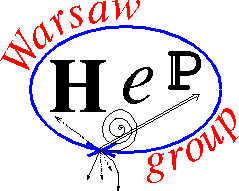SEMINARIUM FIZYKI WIELKICH ENERGII
Dnia 28 kwietnia (piątek) o godzinie 10:15, odbędzie się seminarium online, na którym zostanie wygłoszony referat pt.:
„Study of neutrino mass ordering with the atmospheric neutrinos at Super-Kamiokande”
Referuje: dr Magdalena Posiadała-Zezula (IFD)
Super-Kamiokande (Super-K) is the world’s largest underground water Cherenkov detector which has been studying the atmospheric neutrino oscillations since 1996. Atmospheric neutrinos are famous for covering a wide energy range, have both neutrinos and antineutrinos, with electron and muon flavours, which oscillate to tau neutrinos and are sensitive for matter effects in the earth. Analysis of the atmospheric neutrino data from all five run periods of Super-K running with ultra-pure water, years 1996 – 2020, will be presented. The fiducial volume region has been expanded from 22,5 kton to 27,2 kton, which allowed us to use also the events with reconstructed vertex at least 1~m from the nearest wall of the detector. Additional studies have been performed by adding information from T2K published binned data muon neutrino disappearance and electron appearance. Over the range of parameters allowed at 90% confidence level, the normal mass ordering for neutrinos is favoured based on the combined results from Super-K and with T2K results.
Serdecznie zapraszamy
dr hab. Katarzyna Grzelak
prof. dr hab. Jan Królikowski
prof. dr hab. Aleksander Filip Żarnecki

